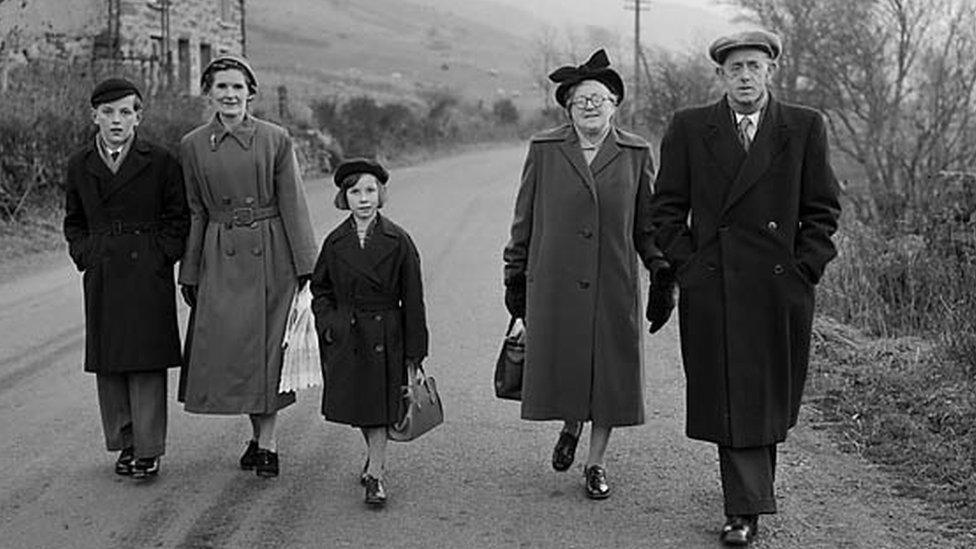Tryweryn: Personal stories 50 years after drowning
- Published
This drone footage shows Tryweryn reservoir 50 years on
Fifty years ago, an idyllic Snowdonia village was flooded to provide Liverpool with water.
Seventy people were forced to leave their homes as Capel Celyn, with its school, chapel, post office and 12 houses, disappeared under the waters of the new Tryweryn reservoir.
The building of the dam stirred up nationalist indignation and a desperate fight to save the village. Half a century on, the trauma is still fresh in the minds of those who lived through it.

"It was a very happy community life," said Eurgain Prysor Jones. "Everybody knew one another and we used to walk to other children's houses to play."
Eurgain was just two years old in 1955 when news broke that Capel Celyn had been earmarked as the site of a new reservoir. The peace of this tiny, remote village was shattered overnight.
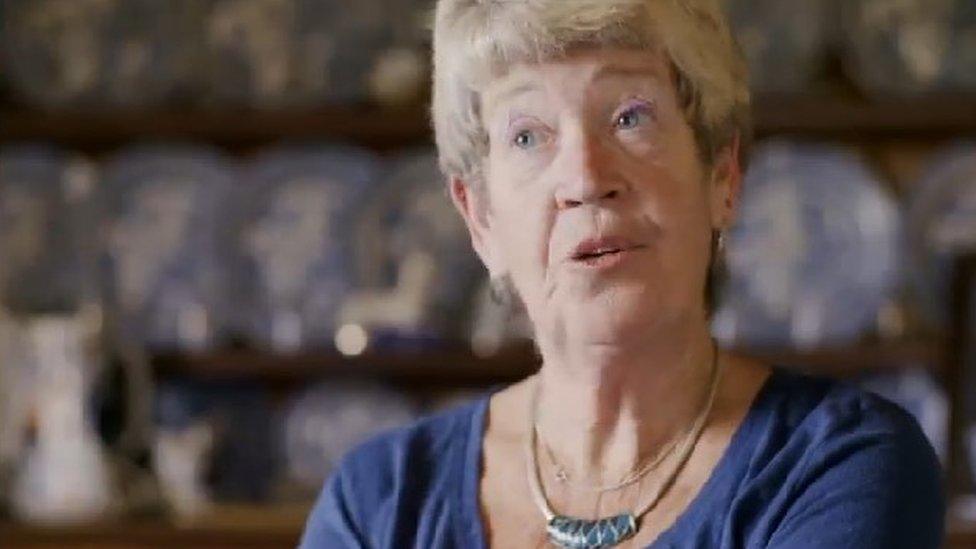
Eurgain Prysor Jones was three years old when she joined villagers on a protest march to Liverpool Town Hall
"To us as children it was a very unsettling time. We didn't quite realise what was happening but we knew our home would be gone, our chapel would be gone, our school would be gone and our friends would be moved to different parts.
"People came to see the village before it was drowned and they used to say, 'Oh isn't it traumatic? Isn't it awful you're going to lose your home? What's going to happen? Where are you going to live?'"
Her older brother Aeron agrees it was a harrowing time: "Everything that takes place when you're a certain age seems to mould your character and I suppose that's what it's done to me.
"You remember where everything was and the people that you link with certain spots within the valley. It makes you wonder with 50 years gone, what might have been if the valley hadn't been flooded."
Capel Celyn was flooded in 1965 to create Tryweryn reservoir, to supply water for the people of Liverpool
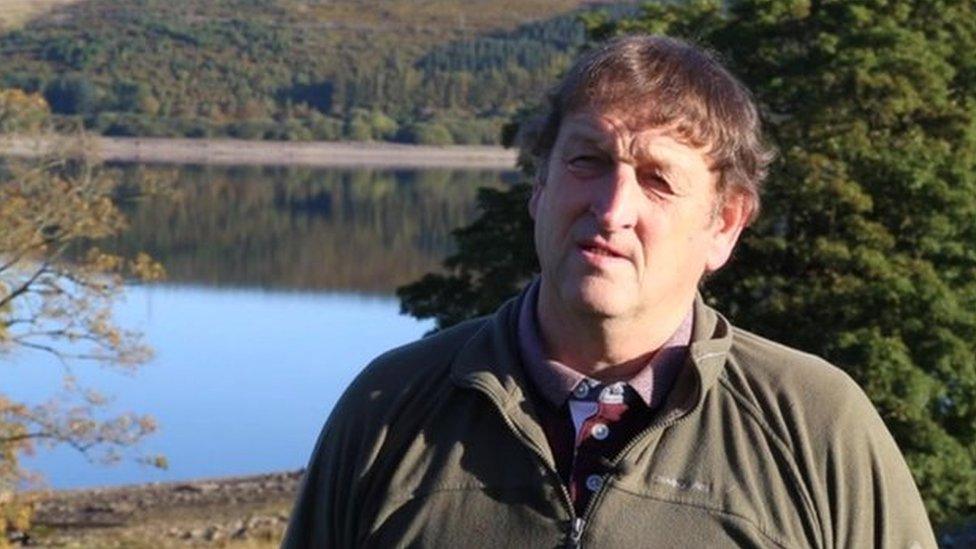
Aeron Prysor Jones says the experience of losing his childhood home has left its mark on him
For nine years after the announcement, the villagers put up a valiant fight to save their homes.
In November 1956, Eurgain became the youngest protestor in a march on Liverpool Town Hall: "I was three years old and the oldest lady was over 80 years old. I had a massive poster to carry which was bigger than me, really.
"The reception we had in Liverpool was awful. People were spitting at us and throwing rotten tomatoes at us. It was an awful disappointment."
"Although it was a brave fight at the time, it was probably a very, very simple protest and it might have been just a way of giving the community peace of mind that they'd done all they could," said Aeron.
"At the end of the day, the eventual consequence was written before it was started."

A family leaving Capel Celyn for the last time in 1956
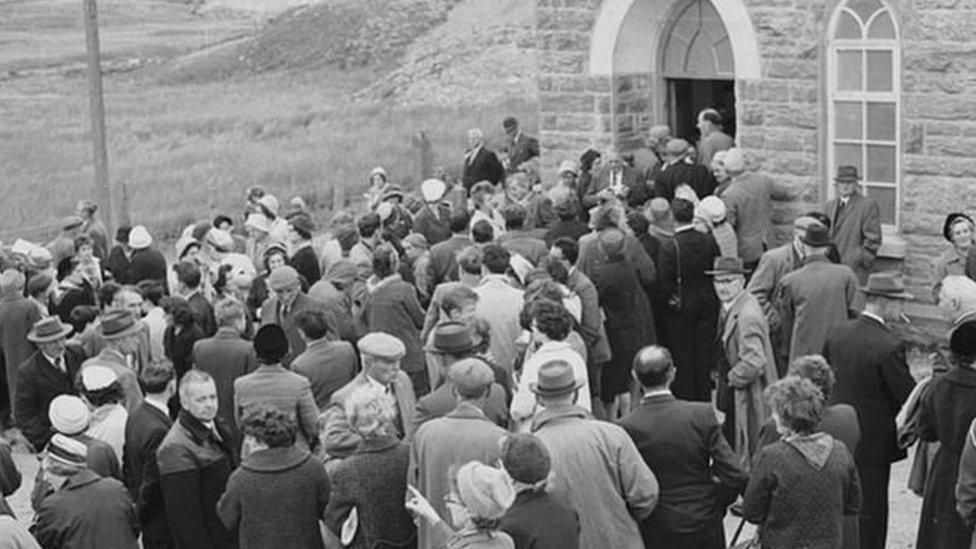
A large congregation attended the last ever service held at Capel Celyn's chapel on 28 September 1963. The last wedding had taken place in the chapel a fortnight before
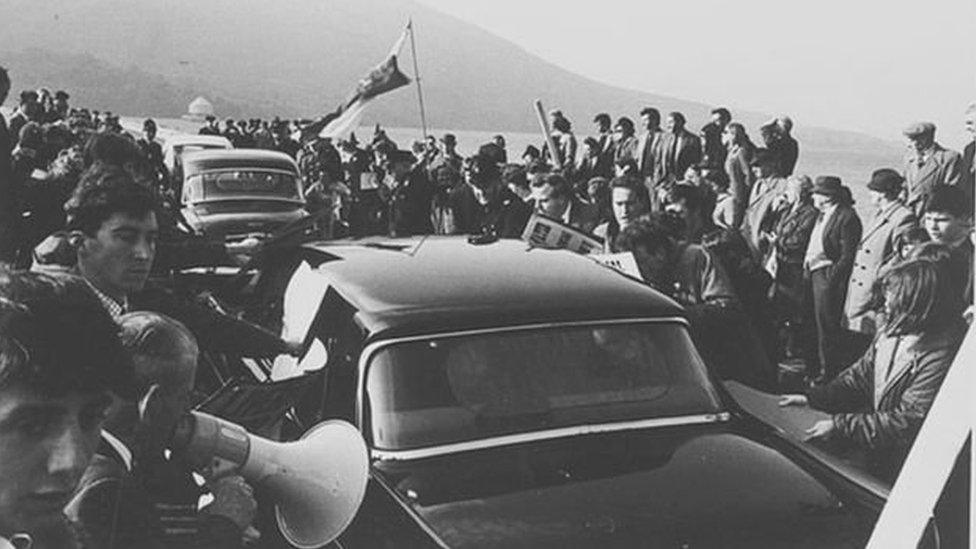
Protests on the day of the official opening of the dam on 21 October 1965
In early 1963, when the dam was still under construction, the protests took a darker turn. Aberystwyth student Emyr Llewelyn, farmer's son Owain Williams and former RAF military policeman John Albert Jones formed Mudiad Amddiffyn Cymru - the Movement for the Defence of Wales.
On the night of 9 February, they travelled through blizzard conditions to plant a 5lb (2.3kg) bomb which destroyed an electricity transformer on the site. Emyr Llewelyn was later sentenced to 12 months in prison for the attack.
Owain Williams and John Albert Jones were jailed following a second bombing which destroyed a pylon at Gellilydan near Trawsfynydd in Gwynedd.
"It was something that had to be done," said Mr Williams, now a Gwynedd county councillor. "None of us wanted to do it but somebody had to stand up and do something.

Owain Williams was jailed for a year for blowing up an electricity pylon at the site
"I was married with three children, one a small baby, and my marriage broke up shortly after I was imprisoned. The family was split. It had its effect, there's no question about that.
"But the action had to be taken. There was no alternative at the time because the Welsh had been pumped with Calvanistic Methodism and other kinds of religion and non-violence for years and maybe it was time we stood up and said, 'Yes, we're here'."
Mr Williams believes the protest marked a political awakening for Wales - "a seed planted to develop for the future, when we would have some kind of democratic defence".
Aeron Prysor Jones agrees: "This project, no doubt about it, ignited the nationalist cause within Wales and there would be uproar if they tried to do something similar again."
But while there is no doubt that the drowning of Capel Celyn fuelled Welsh nationalist feeling, was it really this seismic event which changed the political landscape of Wales forever, leading ultimately to the creation of the Welsh assembly? No, says former First Minister Rhodri Morgan.
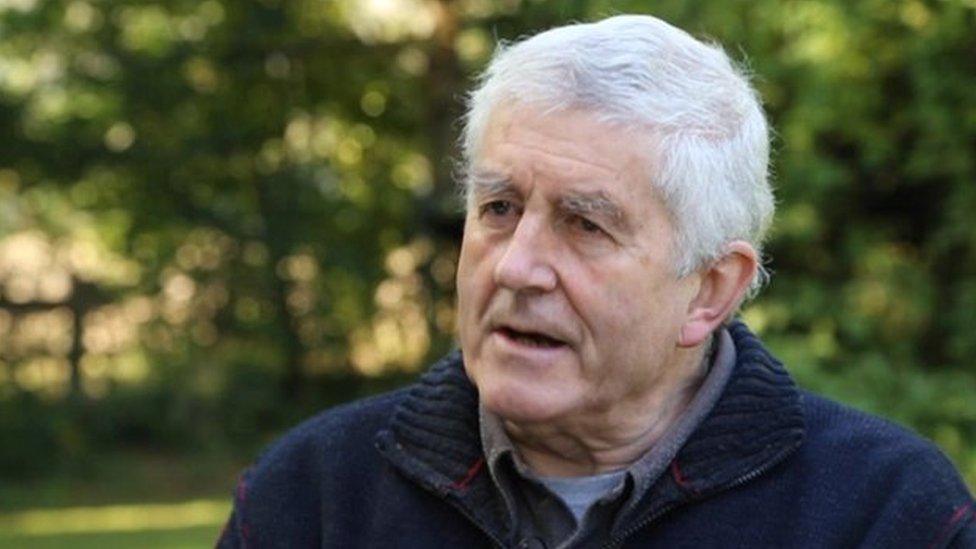
Rhodri Morgan said he did not think the events had an impact in south Wales
"I think there's a little bit of nationalist myth-making here," he said. "The time gap between Tryweryn and the assembly is just too long to make that connection. I certainly don't remember it coming up once during the '97 referendum.
"I don't think it made an impact in south Wales because the concerns were really quite different. Tryweryn was probably a second-order issue because it was a dam-building period. Every big city was building a dam somewhere."
Forty years after the opening of the reservoir, in 2005, Liverpool City Council issued an apology for Tryweryn, stating: "We realise the hurt of 40 years ago when the Tryweryn Valley was transformed into a reservoir to help meet the water needs of Liverpool.
"For any insensitivity by our predecessor council at that time, we apologise and hope that the historic and sound relationship between Liverpool and Wales can be completely restored."
But for the children at the time, like Eurgain Prysor Jones, it was "a very, very sad and traumatic time".
"I think if it happened today we would have counselling for trauma," she said.
- Published21 October 2015
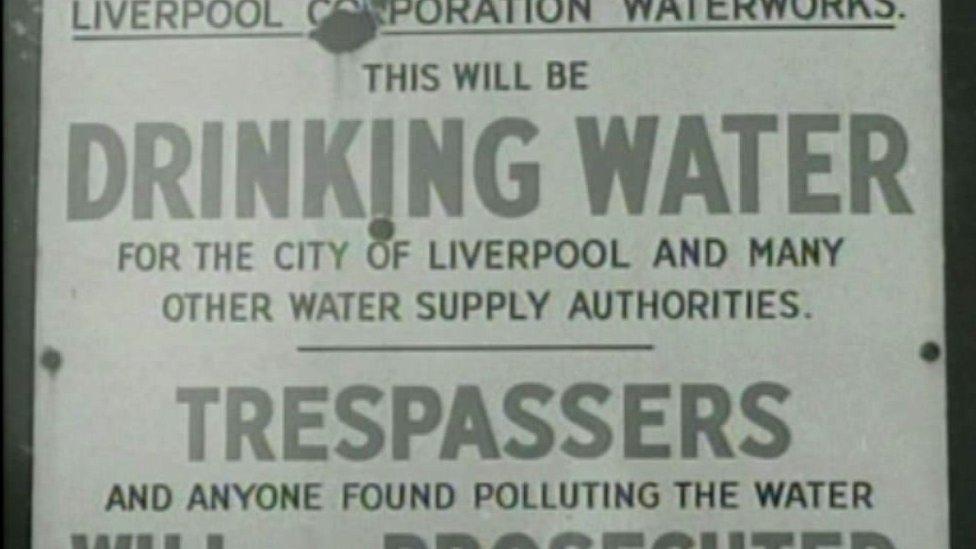
- Published14 October 2015
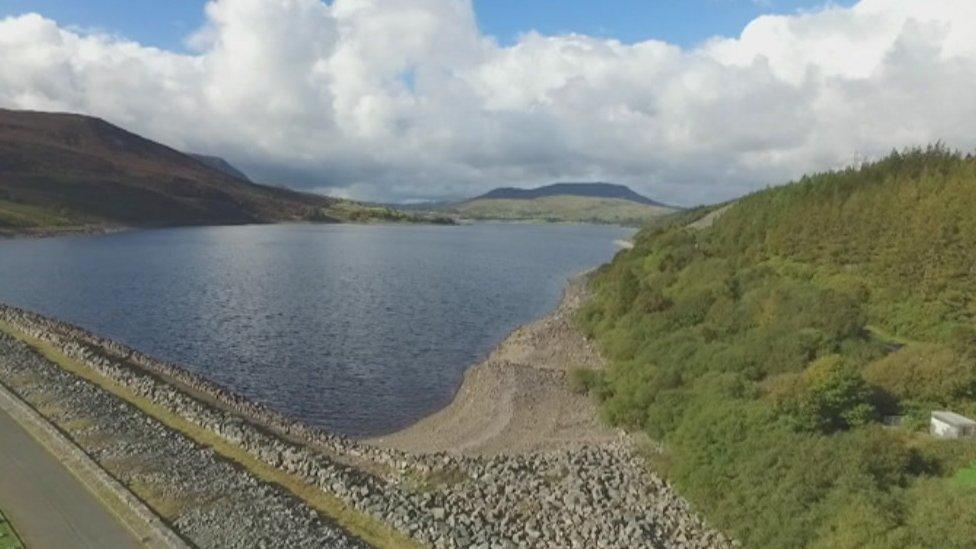
- Published14 October 2015
